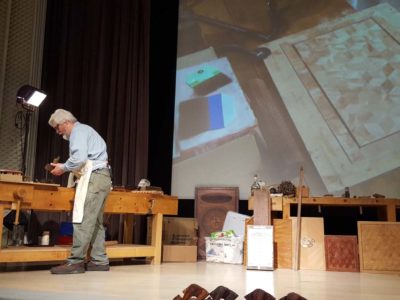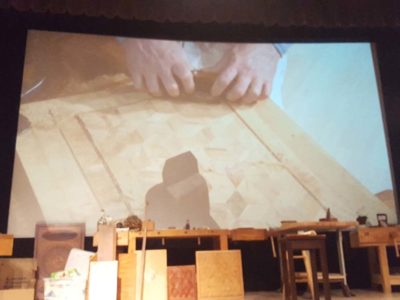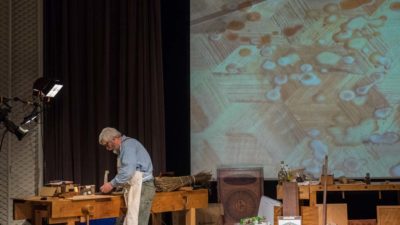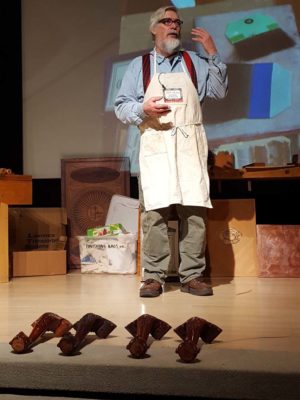WW18thC 2018 – Historic Gilding and Finishing

The last session at WW18thC was my presentation of Historic Gilding and Finishing, including a brief sprint through the application of gold leaf. I described processes of gilding with a particular emphasis on building the surface (wood, gesso, bole) to make it amenable to the laying of gold leaf. It was only a few minutes, but gilding is a topic that can be introduced in either ten minutes or ten days, nothing in between makes much sense.

As quickly as I could I changed gears to get to transparent finishing, relying as always on my Six Steps To Perfect Finishing, a rubric that has served me flawlessly since I came up with it a couple dozen years ago. Not every one of the six points got the same emphasis here, that was not practicable given the time constraints, but the conceptual model was followed closely.


As always the starting point was surface preparation, including using toothing planes, scrapers, and pumice blocks that were integral to the finisher’s tool kit 250 years ago.

The final step in surface prep was to burnish the wood with polishing sticks or fiber bundle polissoirs.

I then moved into the no-man’s-land of filling the grain and building the foundation for the finish yet to come, employing the traditional method of using beeswax as the grain filler. In some circumstances this is the finished surface, in others it is the foundation.

In olden times they would have used a fire-heated iron to melt on the beeswax, I use a similar shaped tool that is electric. The molten wax is drizzled on to the surface then distributed with the heated iron unto there is excess. After cooling any excess is scraped off.

When choosing the finish itself, an 18th century palette would have been based on four major families of finishes. From left to right they are shellac, linseed oil, beeswax, and colophony (pine rosin).

In this demo I used padded spirit varnish (shellac) to show the application of the finish over the beeswax grain filling.
And then my time was up and everyone went home.
****************************************
I’ll be offering my annual Historic Finishing workshop at the barn in late April. Let me know if you would like to participate.


Join the Conversation!